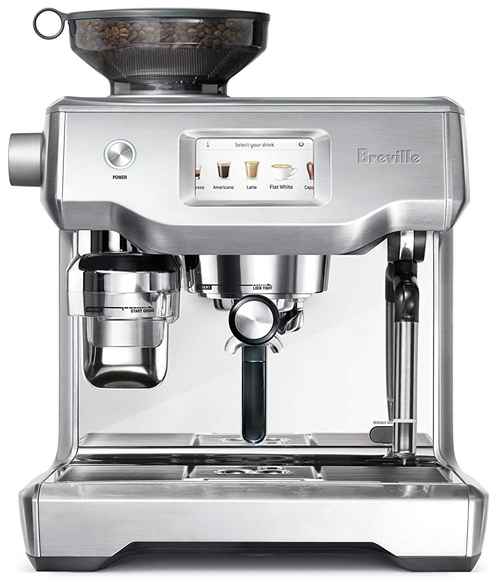Easy Matcha Tea Latte Recipe [+Tips]
Note: This page contains affiliate links.
As an Amazon Associate, I earn from qualifying purchases when you click on the link, but you are not charged extra.
Oh, matcha! If you haven’t jumped on the vibrant green train yet, you’re missing out on one of the most delightful and healthful drinks out there. Matcha tea latte isn’t just a fancy café treat; it’s a delicious, creamy, and energizing beverage that you can whip up at home in minutes. This bright green powder comes from finely ground green tea leaves, offering a unique earthy flavor, a rich boost of antioxidants, and that unmistakable zing of caffeine – but without the jitters you get from coffee.
- Old World Christmas Beans: Tastes like the holidays in every cup — discover the cozy magic of Old World Christmas Beans before the season slips away.
- Kirkland Sumatra French Roast : Dark, bold, and wildly smooth—why Kirkland’s Sumatra French Roast is the best-kept secret of serious coffee drinkers.
- Hot Fudge Whole Bean Coffee : What happens when dessert meets coffee? Meet the decadent whole bean that tastes like hot fudge—but better.
- Aroma Ridge Guatemala Antigua Medium Roast : From the highlands of Guatemala to your morning mug—this rich, balanced roast is waking up coffee lovers everywhere.
- Juan Valdez Cumbre Colombian Coffee : Crafted by Colombia’s most iconic coffee legend—why Cumbre is a must-try for fans of bold, authentic flavor.
What’s amazing about this drink is how versatile and approachable it is. Whether you’re a seasoned tea lover or a curious newbie, making an easy matcha latte at home can be a fun little ritual, a cozy treat, or your daily energizer. Plus, it’s Instagram-worthy with its vibrant green hue!
In this guide, I’ll walk you through everything – from gathering your ingredients, crafting your latte, to sprinkling in some pro tips and fun twists you can try. Ready to become a matcha master? Let’s get brewing!
- 1 Ingredients For Easy Matcha Tea Latte Recipe
- 2 How To Make Easy Matcha Tea Latte?
- 3 Expert Tips
- 4 Recipe Variations
- 5 Final Words
- 6 FAQs
- 6.1 What Ingredients Do I Need For An Easy Matcha Tea Latte?
- 6.2 How Do I Properly Mix Matcha Powder To Avoid Clumps?
- 6.3 Can I Use A Regular Whisk Or Spoon Instead Of A Matcha Whisk?
- 6.4 What Type Of Matcha Powder Should I Use For A Latte?
- 6.5 Can I Make A Matcha Tea Latte Iced Instead Of Hot?
- 6.6 What Milk Works Best For A Creamy Matcha Latte?
- 6.7 Is It Necessary To Sweeten A Matcha Latte?
- 6.8 How Much Caffeine Is In A Matcha Tea Latte?
- 6.9 Can I Make A Matcha Tea Latte In Advance?
- 6.10 What Are The Health Benefits Of Drinking Matcha Tea Lattes?
Ingredients For Easy Matcha Tea Latte Recipe
Before we jump into the making, let’s talk ingredients. The beauty of this recipe is how simple yet flexible it is:
- Matcha powder: About 1 to 2 teaspoons (depending on how strong and vibrant you like it). Opt for ceremonial-grade matcha if you want that pure, smooth flavor. Culinary-grade works if you’re on a budget or making a sweeter version.
- Milk of your choice: 1 cup. Here’s the fun part – you can use dairy milk, but plant-based options like almond, oat, soy, or coconut milk add unique flavors and creaminess.
- Hot water: Approximately 2 to 3 ounces (not boiling, ideally around 175°F/80°C). Boiling water can scorch the matcha, making it bitter.
- Sweetener (optional): Honey, maple syrup, agave nectar, or simple sugar – just a teaspoon or two to taste.
- Vanilla extract (optional): A drop or two to deepen the flavor complexity.
- Ice (optional): For iced matcha latte lovers who want it cool and refreshing.
How To Make Easy Matcha Tea Latte?
Alright, let’s break it down step-by-step. Don’t worry – it’s easier than it looks!
- Sift the matcha powder into a bowl or cup to avoid clumps. This step helps achieve that smooth, lump-free texture.
- Add hot water (about 2-3 ounces) at the perfect temperature (around 175°F/80°C). Pour it over the sifted matcha.
- Whisk vigorously using a bamboo whisk (chasen) or a small electric frother. Your goal is to create a frothy, bright green foam on top. This usually takes about 15-20 seconds of brisk whisking in a zigzag motion.
- Heat your milk: Warm your milk (about 1 cup) either on the stove or in the microwave until it’s steaming but not boiling.
- Froth the milk: Use a milk frother or whisk vigorously to create creamy foam.
- Combine: Pour the steamed milk slowly into the matcha mixture, stirring gently as you go.
- Sweeten & flavor: Add your preferred sweetener and a tiny splash of vanilla extract if using, and give it a gentle stir.
- Serve immediately and enjoy the vibrant green, creamy goodness!
If you want it iced, just pour the matcha mixture over ice and add cold milk instead.
Expert Tips
- Water temperature is key! Too hot and the matcha tastes bitter; too cool and it won’t dissolve properly. Aim for around 175°F (80°C).
- Use a bamboo whisk if possible. It’s traditional and helps aerate the matcha beautifully, but an electric frother works just fine for a quick fix.
- Sifting matcha powder is non-negotiable. Clumps are the enemy of a silky latte.
- Adjust matcha powder to taste. If you’re new, start with 1 teaspoon; for a stronger flavor, go up to 2.
- Experiment with milk types. Oat milk is naturally sweet and creamy, making it a top choice for lattes.
- Sweeten cautiously. Matcha’s natural flavor is earthy and slightly bitter – a little sweetener goes a long way.
- Prepare matcha fresh every time. It loses its vibrant color and flavor quickly once mixed with water.
Recipe Variations
Now, let’s spice things up! The matcha latte is a fantastic canvas to experiment on:
- Iced Matcha Latte: Use cold water, pour over ice, and add cold milk for a refreshing summer version.
- Vanilla Matcha Latte: Add a teaspoon of vanilla syrup or extract for a cozy twist.
- Cinnamon Matcha Latte: Sprinkle a dash of cinnamon on top or mix it into the milk for a warming spice note.
- Coconut Matcha Latte: Use coconut milk and garnish with toasted coconut flakes for a tropical vibe.
- Matcha Mocha Latte: Mix in a teaspoon of cocoa powder or chocolate syrup for a delicious fusion.
- Matcha Protein Latte: Add a scoop of vanilla or unflavored protein powder to fuel your morning workout.
Final Words
Making a matcha tea latte at home is a little ritual of self-care and creativity – plus, it tastes fantastic! Once you get the hang of whisking and find your perfect milk and sweetness combo, this drink can quickly become a daily indulgence. And the best part? You control every ingredient, so it’s healthier and often cheaper than the café versions.
Whether you’re looking for a smooth morning pick-me-up, a cozy afternoon delight, or a chic drink to impress your friends, the easy matcha tea latte has got you covered. Trust me, once you master it, you’ll never want to go back to plain green tea or a regular coffee.
FAQs
What Ingredients Do I Need For An Easy Matcha Tea Latte?
To make an easy matcha tea latte, you’ll need 1 teaspoon of matcha powder, 2 ounces of hot water (not boiling, around 175°F/80°C), 6-8 ounces of milk (dairy or plant-based), and a sweetener of your choice like honey, maple syrup, or sugar.
How Do I Properly Mix Matcha Powder To Avoid Clumps?
For a smooth matcha latte, sift the matcha powder first to remove clumps. Then whisk it briskly with hot water using a bamboo whisk (chasen) or a milk frother in a zigzag (M or W) motion until it becomes frothy and fully dissolved.
Can I Use A Regular Whisk Or Spoon Instead Of A Matcha Whisk?
Yes, you can use a small regular whisk, milk frother, or even shake the matcha with water in a jar or shaker bottle if you don’t have a bamboo whisk. Just make sure to mix thoroughly to avoid clumps.
What Type Of Matcha Powder Should I Use For A Latte?
Culinary grade matcha works well for lattes due to its stronger flavor and affordability, but for a smoother, less bitter taste, ceremonial grade matcha is ideal, though more expensive.
Can I Make A Matcha Tea Latte Iced Instead Of Hot?
Absolutely. To make an iced matcha latte, prepare the matcha as usual by whisking with hot water, then pour it over ice and add cold milk and sweetener. Stir well and enjoy.
What Milk Works Best For A Creamy Matcha Latte?
Whole milk provides a rich and creamy texture, but oat milk, almond milk, or soy milk are excellent plant-based alternatives that froth well and complement matcha’s flavor.
Is It Necessary To Sweeten A Matcha Latte?
No, sweetening is optional. Matcha has a naturally earthy, slightly bitter flavor that some people enjoy unsweetened. However, adding sweetener like honey or vanilla syrup can balance the taste, especially for beginners.
How Much Caffeine Is In A Matcha Tea Latte?
A matcha tea latte made with 1 teaspoon of matcha contains about 60-70 mg of caffeine, depending on the matcha quality. It provides a more sustained energy boost compared to coffee, thanks to the presence of L-theanine.
Can I Make A Matcha Tea Latte In Advance?
Yes, you can prepare it ahead and store it in the refrigerator for up to 24 hours. However, it may separate slightly, so be sure to shake or stir it well before drinking.
What Are The Health Benefits Of Drinking Matcha Tea Lattes?
Matcha is rich in antioxidants (especially EGCG), supports mental clarity and calmness due to L-theanine, and may help boost metabolism and heart health. When paired with milk, it also provides calcium and protein.

